SNOW BUNTING & LESSER WHITETHROAT UPSTAGE SHORT EARED OWL @ SPURN POINT
- Jonathan Marshall
- Oct 5, 2019
- 10 min read

On Saturday I visited the superb Spurn Point National Nature Reserve which is located off the tip of the coast of East Yorkshire. Spurn is a narrow sand tidal strip of land which reaches into the North Sea and forms the north bank of the mouth of the Humber estuary. Up until a storm in 2013 you could drive right down to the southernmost tip, but this storm made the road impassable at high tide. A storm in 2017 further damaged the sandbank, washing away the remaining part of the road that was damaged in 2013.
The island beyond the breach is over three miles long and as little as fifty yards wide in places. The southernmost tip is known as Spurn Head and is home to the RNLI lifeboat station and two disused lighthouses. Spurn Head covers 280 acres above high water and around 450 acres of foreshore and has been owned by the Yorkshire Wildlife Trust since 1960. In the Middle Ages, Spurn Head was home to the port of Ravenspurn where Henry of Bolingbroke landed in 1399 on his return to dethrone Richard II. It was also where Sir Martin De La See led the local resistance against Edward IV's landing on 14th March 1471 as he was returning from his six months exile in the Netherlands.
The lifeboat station at Spurn Head was built in 1810 and owing to the remote location, houses for the lifeboat crew and families were added a few years later. The station is now one of only a few in the UK which has a full time paid staff with all the others being on the River Thames in London. During the First World War two coastal artillery batteries were added at either end of Spurn Head with quick firing guns in between them.
The military also built a railway line from the village of Kilnsea all the way along to the end of Spurn Point with a total length of 3.75 miles. The line was built in 1915 to supply military installations along this stretch of coast. Spurn Point had originally been militarised in 1805 during the Napoleonic Wars and when the First World War was declared the number of military personnel greatly increased overnight. The War Department decided that a railway line between Kilnsea and Spurn Point would be the best option for a supply chain and purchased the land.
The line was constructed by CJ Wills & Company with the rails and other second hand materials coming from the Great Central and Manchester, Sheffield and Lincolnshire Railways. The line was eventually closed down in 1951 and was replaced by a road and the land was demilitarised between 1956 and 1959 before being sold in 1960. Apart from some small sections of the rails sunk into tarmac/concrete, there is not much left to show that this railway even existed.

Since the storm in 2017, Spurn has now become a tidal island, as the narrowest part of the sandbank connection to the mainland is flooded with each high tide. The spit is made up from sand, shingle and boulder clay eroded from the Holderness coastline that is washed down the coast from Flamborough Head. Material is washed down the coast by long shore drift and accumulates to form the long narrow embankment in the sheltered waters inside the mouth of the estuary.
There are two lighthouses at the end of Spurn Point, the Low Lighthouse (built 1852) and the brick lighthouse in the middle of Spurn Head (built 1895). Only the foundations of the low lighthouse now remain with a large water tank replacing the rest of it. The brick lighthouse is painted black and white and its main light had a range of twenty miles before the light was discontinued in 1985. In 2013 the Yorkshire Wildlife Trust was awarded nearly £500,000 to restore it and once the work was completed it reopened to the public in March 2016.
The landward side mud flats are an important feeding ground for wading birds and the area has a bird observatory for monitoring migrating birds. Their migration is assisted by the east winds in autumn, resulting in drift migration of Scandinavian birds, sometimes leading to a spectacular "fall" of thousands of birds. Many rarer species have been sighted there, including a Cliff Swallow from North America, a Lanceolated Warbler from Siberia and a Black-Browed Albatross from the Southern Ocean.

More commonly, birds such as Wheatears, Whinchats, Common Redstarts and Flycatchers stop off at Spurn on their way between breeding and wintering grounds. When the wind is in the right direction migrants are funnelled down Spurn Point and are counted at the Narrows Watchpoint, more than fifteen thousand birds can fly past on a good morning in autumn with three thousand quite normal. In 2018 the Yorkshire Wildlife Trust opened a visitor centre and new car park near the entrance to the reserve.
It had been a very wet week but on Saturday it was a dry but cloudy day when I arrived at Spurn Point. After a quick trip to the YWT visitor centre to check the latest sightings board before I returned to the car and headed up to Kilnsea Wetlands which is around half a mile north. There were large groups of Starlings perched on the telegraph wires as well as a couple of Curlews in the fields. I walked across to the gate at the far end of the car park and followed the path round to the hide and as I reached there was a trio of Skylarks soaring overhead.
Out on the water I could see Mallards, Lesser Black Backed Gulls, Greater Black Backed Gulls, Black Headed Gulls as well as several Shelducks. When I looked closer at what appeared to be a mud bank I could see that it was two very large groups of Knots all huddled together. Across the two groups there were at least a thousand Knots and after a few minutes the group further away rose up on mass providing quite a spectacle before they landed in and amongst the other group.

Dotted amongst them were a couple of Greenshanks and Redshanks with a large group of Redshanks right at the back of the water. On a post in the water just to the right of the Knots was a lone Mediterranean Gull and a pair of Sand Martins swooped low and fast over the water from right to left. Over to the right of the hide, on the grass banking, were several Greylag Geese whilst just to the left were around half a dozen Knots making their way along the edge of the water.
They were moving back and forth for several minutes before they were joined by one of six Dunlins with the other five being at the edge of the large group of Knots. They moved out of view as another Knot waded across the sand in front of me and as I looked up into the sky I saw a dark shape of a large bird flying high above the water. When it got a little closer I thought it looked like an Owl and as it was about to fly over the hide everyone rushed outside to get a better view. I now had a clear view and could see it was a Short Eared Owl which is a scarce visitor to the UK during autumn and winter. It is also the largest of the five Owl species which are either resident or a visitor to the UK and this was the first time I had ever seen one.
The Short Eared Owl turned to the north and headed towards Easington and from here I decided to walk along the path heading east towards the sea. After about two hundred yards I stopped at a viewing screen where amongst the other Gulls in the distance I could see a Caspian Gull which is a rare visitor with around fifty visiting each winter. A short distance further along I reached a gate which I walked through and turned to the left along a path following the line of a hedge.

As I walked next to the hedge I saw Starlings, Blue Tits, Great Tits, Reed Buntings and a lone Dunnock. A little further along I arrived at a large lagoon on my right with big sand dunes on the other side separating it from the sea. On the water I could see several Mallards, a pair of Wigeons and a single Mute Swan amongst more than fifty Brent Geese. It was now after midday so I returned along the path towards the gate and as I reached it I could hear a Robin singing away from the other side of the hedge. Once I had walked through the gate I could see the Robin amongst some berries and further along a trio of Skylarks flew overhead and landed in the grass at the edge of the water.
I returned to the car and headed back down to the visitor centre, where there were still large numbers of Starlings on the telegraph wires, and paid a visit to the very busy cafe for lunch. Whilst I was having my lunch there were sightings of Bearded Tits amongst the reeds close to the visitor centre. Following my lunch I left the visitor centre and walked along the road to where a path which heads along a grass banking at the edge of Humber estuary till it reaches the Crown & Anchor pub half a mile away. I went a short distance along this path to where a group of people were trying to see the Bearded Tits.
Sadly they had not been seen for more than ten minutes so I headed back to the road towards the Warren and Seawatch Hide. They were currently doing some bird ringing close to the Seawatch Hide so I took a detour off the road and headed up the steps to take a closer look. After watching them ring, measure and weigh a Goldcrest, Song Thrush and a couple of Blue Tits I headed back down the steps to the road and continued along towards the breach.

On the beach to my left I could see a lone Seal and a few Gulls as the road turned to the right where in the shrubs to my right I could see a few Meadow Pipits moving along the ground. The remainder of the road had been churned up and was now in pieces with sand also having shifted significantly since my last visit. I could see a few Little Egrets close to the water's edge but not much else so I headed to the eastern side of the breach and began to walk along the beach back towards the Seawatch Hide.
A little further along there was a Lesser Black Backed Gull stood in the shallows at the edge of the water. I continued on and I could see that the Seal was still lying on the beach around three hundred yards south of the Seawatch Hide. After taking a wide route around the Seal, so I didn't spook or scare it, I headed back across to the road and then up the steps to the Seawatch Hide. As I walked along the top of the sand bank a couple of Skylarks were soaring overhead and down on the beach were several more Gulls.
Eventually the path turned to the left and headed down the side of a hedge towards the visitor centre and as I approached there were several Goldfinches and Linnets. I walked across the road and past the visitor centre to the Canal Scrape Hide which is about fifty yards north of the visitor centre. The water in front of the hide was quiet with just half a dozen Moorhens and a pair of Mallards, but no sign of the Jack Snipe which had been seen earlier in the day.

I went back to my car and moved it about half a mile north to the Blue Bell Car Park so I could walk up Beacon Lane where in the previous days there had been sightings of Snow Buntings, Bramblings and a Red Breasted Flycatcher. I walked the short distance across to Beacon Lane which is bordered on both sides by berry filled trees and hedges with fields behind them on the left and a caravan park on the right. As I walked along the lane I saw Redwings, Song Thrushes and Blackbirds flying over the bushes. There were several Tree Sparrows and Chaffinches perched in the trees and a little further along I spotted a Brambling moving through branches of a tree picking at the berries.
As I was watching the Brambling I noticed another bird moving through a tree about thirty feet further along the lane to my left. I moved closer as it disappeared into the tree and after a couple of minutes it re-appeared and it began to move its way around the outside of the tree. After taking a closer look at one of the photos I managed to get I was able to identify it as a Lesser Whitethroat. After taking several photos I continued along the lane for another three or four hundred yards to where the path emerges from the trees and hedge and onto the sand dunes at the edge of the beach.

This is were the Snow Bunting had been seen over the last couple of days and there were about half a dozen people there searching for it when I arrived. It had just flown low along the tall grass and dropped down amongst it and disappeared from view. After a couple of minutes it emerged from the tall grass and began walking along the ground looking for food. It spent several minutes moving in and out of sight amongst the tall grass before I headed back along Beacon Lane.
Around half way along the lane I spotted several Chaffinches, Tree Sparrows and a couple of House Sparrow. A short distance further down the lane were a trio of Bramblings flying through the trees with one stopping briefly to eat some berries before carrying to join the other two. From here I moved on to the Crown & Anchor pub car park as Goldcrests and Yellow Browed Warblers had been spotted over the last couple of days.

I bought a drink from the bar and headed out to the beer garden where they had been seen and within a few seconds I saw a Goldcrest moving along the branches near the top of a tree. There were also a pair of Chiffchaffs in the trees but after half an hour of waiting there was no sign the Yellow Browed Warblers so I started walking back across the car park but I noticed several birds in a field behind the pub. I walked across to a gate at the edge of the field were I could see Redwings, Song Thrushes, Jackdaws, Crows and Blackbirds.
I crossed over the road in front of the pub and on the wet sand I could see Redshanks, Gulls and Little Egrets. From here I headed to the Spurn Bird Observatory which was quiet with just a few Chaffinches and a single Pheasant at the far end of Church Field at the back of the property. The light was now starting to fade so I headed back to my car to start my journey home and as I drove between Kilnsea and Easington I saw several Roe Deer and a lone Hare in the fields.
I have attached a few photos and a full sightings list from my visit to Spurn Point.



















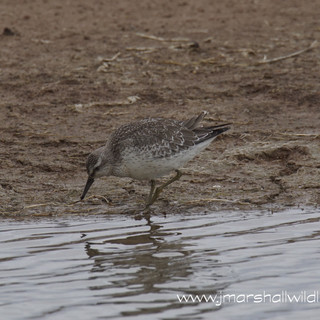











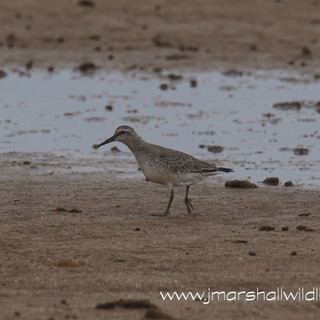

























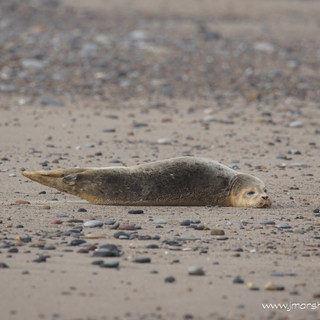

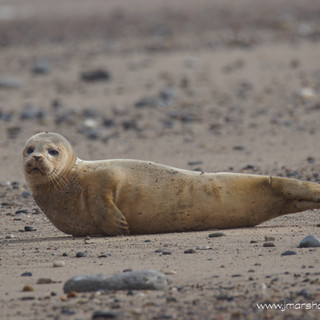
































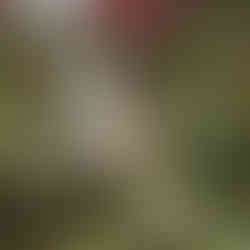












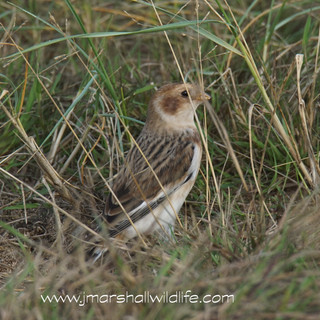






















Comments